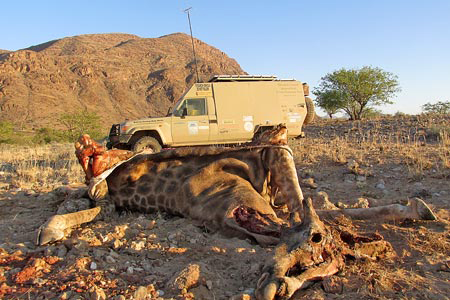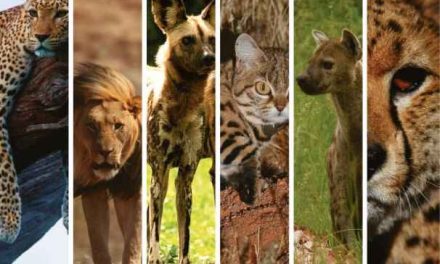
Three giraffe subspecies critically endangered

19 December 2016 – The iconic giraffe, one of the world’s most recognisable animals and the tallest land mammal, has moved from ‘Least Concern’ to ‘Vulnerable’ in the newly released International Union for Conservation of Nature (IUCN) Red List of Threatened Species.
Widespread across southern and eastern Africa, with smaller isolated populations in west and central Africa, new population surveys estimate an overall 36% to 40% decline in the giraffe population from approximately 160,000 in 1985 to only 97,000 in 2015.
Of the nine currently recognised subspecies of giraffe, five have decreasing populations, while three are increasing and one is stable. This updated assessment of giraffe as a species was undertaken by the IUCN Species Survival Commission’s Giraffe & Okapi Specialist Group.
“While giraffe are commonly seen on safari, in the media and in zoos, people, including conservationists, are unaware that these majestic animals are undergoing a silent extinction. With a decline of almost 40% in the last three decades, the world’s tallest animal is under severe pressure in some of its core ranges across East, Central and West Africa. As one of the world’s most iconic animals, it is time that we stick our necks out for giraffe before it is too late,” said Dr. Julian Fennessy, the Co-chair of the Giraffe & Okapi Specialist Group. Dr Fennessy is also the Director of the Giraffe Conservation Foundation, a conservation institution dedicated to the protection of wild giraffe.
Recent genetic research by the foundation’s Senckenberg Biodiversity and Climate Change Research Centre and other partners, suggests that there are four distinct species of giraffe instead of only one, however, the IUCN only recognises a single species. Should these new genetic findings be confirmed, this would likely result in three of the four giraffe species listed as under considerable threat on the IUCN Red List.
Human population growth poses the biggest threat to giraffe. Habitat loss and changes through expanding agriculture and mining, illegal hunting, increasing human-wildlife conflict, as well as civil unrest, are all factors that are pushing giraffe towards extinction.
However, the Giraffe Conservation Foundation is a strong advocacy group. During this year, the foundation and its partners have supported and collaborated on many critical giraffe conservation initiatives in several African countries. Furthermore, the foundation is instrumental in developing a continental Framework Strategy for Giraffe Conservation, and in profiling the many isolated giraffe populations scattered across the continent.
Commented Dr Fennessy, “while the Giraffe Conservation Foundation is a small organisation, we are increasing our reach, working with partners throughout Africa to enhance giraffe conservation on the ground, while at the same time collaborating with partners internationally to rally support and awareness for giraffe, which will ultimately help to save them in the wild in Africa.”
At the IUCN World Conservation Congress in September this year a resolution (008 – Giraffids: reversing the decline of Africa’s iconic megafauna) was adopted by the members and a call for action to reverse the decline of giraffe in the wild, was issued.
The Giraffe Conservation Foundation is the only NGO in the world that concentrates solely on the conservation and management of giraffe in the wild throughout Africa.













































